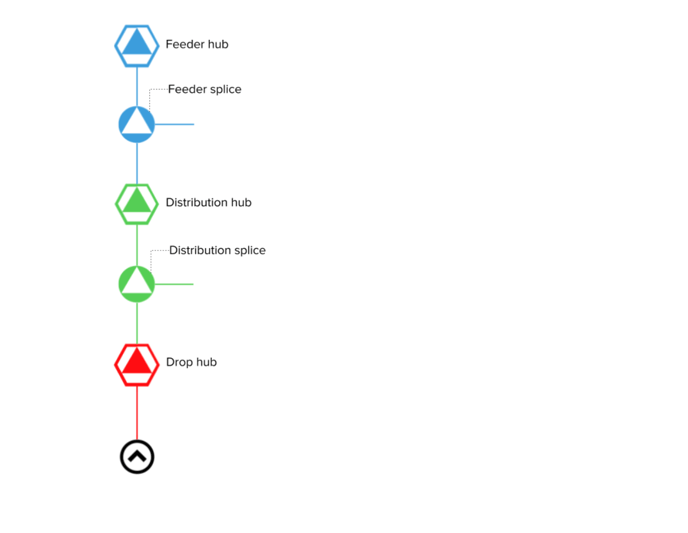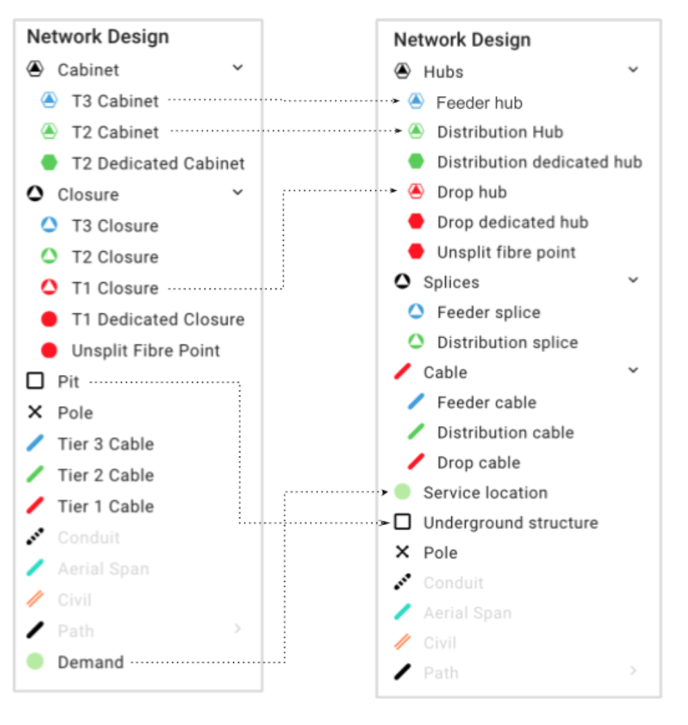Terminology in FOND
In May 2020 we updated the terminology you see when you are using FOND to better reflect what we have learned from customers. This article explains the updates.
What did we learn from customers?
We learned from existing and prospective FOND users that:
- the ‘Tier 1, 2 and 3’ terminology was confusing
- the names ‘Closure’ and ‘Cabinet’ were not easy to understand, and
- ‘Pit’ meant something very specific to some users
Therefore, we have adopted new terms and edited the schema based on this feedback. The changes are detailed here:
FOND Output Schema version 2.0 changes
Tiers
The new names for the tiers will be Drop, Distribution and Feeder.
Tier 1 → Drop tier
Tier 2 → Distribution tier
Tier 3 → Feeder tier
Hubs and Splices
The word ‘hub’ will be used to represent any closure or cabinet at the top end of a tier. Hubs are usually cabinets, closures or terminals (e.g. FOSC, FDH, MST), and they may or may not have a splitter in them. All hubs will be in one layer and can be distinguished from the Tier field.
Other splice enclosures in the Distribution and Feeder tiers will be in their own ‘Splice’ layer.
This is a simple architecture diagram with the new terms:

Fiber Equipment
This is a new layer; it contains splitter data.
Underground Structure
We renamed the output layer ‘Pit’ to ‘Underground Structure’. This layer represents all generic underground structures such as pits, pedestals, manholes, handholes, flowerpot, etc. generated by FOND, but a more detailed and accurate breakdown of underground structures will be in your BOM (if it is customised).
Below is a comparison of the FOND map legend before and after the schema change, with some changes shown with arrows:
